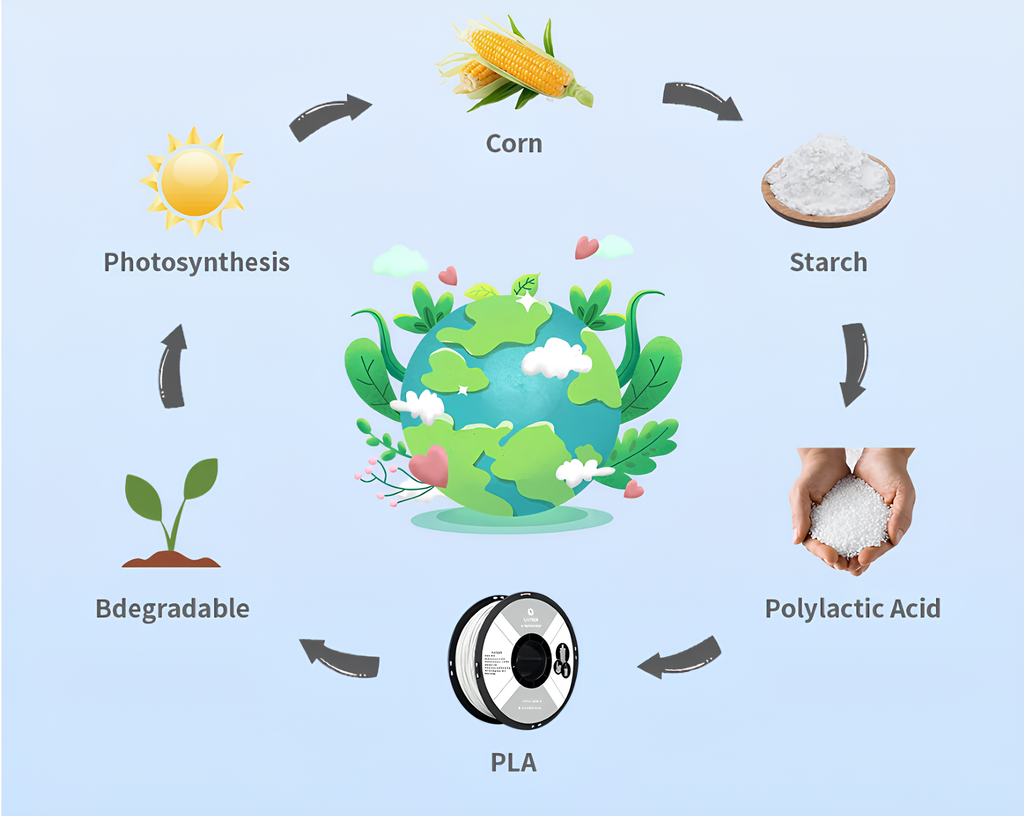Unleash Your Creativity: Discover the Secrets of Safe and Non-Toxic PLA Filament for 3D Printing!
The world of 3D printing is rapidly evolving, capturing the imagination of hobbyists and professionals alike. As this innovative technology continues to gain popularity, the importance of selecting safe materials cannot be overstated. One material that stands out in the 3D printing community is PLA filament, known for its ease of use and versatility. However, as with any product, concerns about safety and toxicity can arise. Understanding the truth about PLA filament and toxicity is essential for anyone looking to create amazing 3D printed designs while ensuring their health and safety remain a priority. This article will guide you through the essential aspects of PLA filament, helping you make informed choices for your 3D printing projects.

Understanding PLA Filament
PLA, or Polylactic Acid, is a biodegradable thermoplastic made from renewable resources such as corn starch or sugarcane. This composition makes it an appealing choice for environmentally conscious makers. PLA filament is widely used in 3D printing due to its user-friendly characteristics; it adheres well to build surfaces, has a low tendency to warp, and can produce high-quality prints with fine details. It is commonly employed for creating prototypes, models, and various hobbyist projects. Many professionals appreciate its ability to create durable and aesthetically pleasing prints without the complexities associated with other plastics. This ease of use makes PLA filament an ideal choice for newcomers to the 3D printing sphere, as well as for seasoned users looking for reliable materials.
Toxicity Concerns of PLA Filament
Despite its popularity, some individuals express concerns about the potential toxicity of PLA filament. It is crucial to address these misconceptions to foster a better understanding of the material. Under normal printing conditions, PLA filament is generally considered safe and non-toxic. However, certain factors can lead to the release of harmful particles or fumes. For instance, overheating PLA during the printing process may result in the degradation of the material, producing potentially toxic byproducts. Additionally, some lower-quality PLA filaments may contain additives that could pose health risks. It’s essential to stay informed and vigilant about the sources of your filament, as not all products labeled as PLA are created equal.
Identifying Safe and Non-Toxic PLA Filament
When it comes to selecting safe and non-toxic PLA filament, a few guidelines can help you make informed decisions. First and foremost, look for certification labels that indicate compliance with safety standards. Certifications from reputable organizations can provide reassurances regarding the filament's safety. Additionally, opt for filaments that disclose their material composition and any additives used in production. This transparency can help you avoid low-quality products that may harbor potential risks. Furthermore, consider researching user reviews and recommendations from trusted sources to identify filament brands that consistently prioritize safety and quality. A well-regarded filament can enhance your 3D printing experience while minimizing health concerns.
Best Practices for Using PLA Filament Safely
To maximize safety when using PLA filament, following best practices is essential. Ensure that your printing area is well-ventilated to help disperse any fumes that may arise during the printing process. Maintaining appropriate temperature settings is crucial; excessive heat can lead to the breakdown of the filament, resulting in the release of unwanted particles. Regularly clean your 3D printer to prevent the buildup of debris, which can also contribute to poor air quality. After printing, consider using proper post-processing techniques, such as sanding or sealing, to minimize any lingering risks associated with the filament. By combining these practices, you can confidently enjoy the creative possibilities of 3D printing with PLA while keeping safety at the forefront.
Ensuring Safety with PLA Filament
In summary, understanding the truth about PLA filament and its associated toxicity is critical for anyone involved in 3D printing. As we have explored, PLA is a popular choice due to its ease of use and biodegradable properties, but it is essential to remain aware of potential risks. By selecting high-quality, certified PLA filament and adhering to best practices during the printing process, you can ensure a safe and enjoyable 3D printing experience. Make informed decisions and prioritize safety in your creative endeavors, allowing you to unleash your imagination without compromising your health or the environment.








